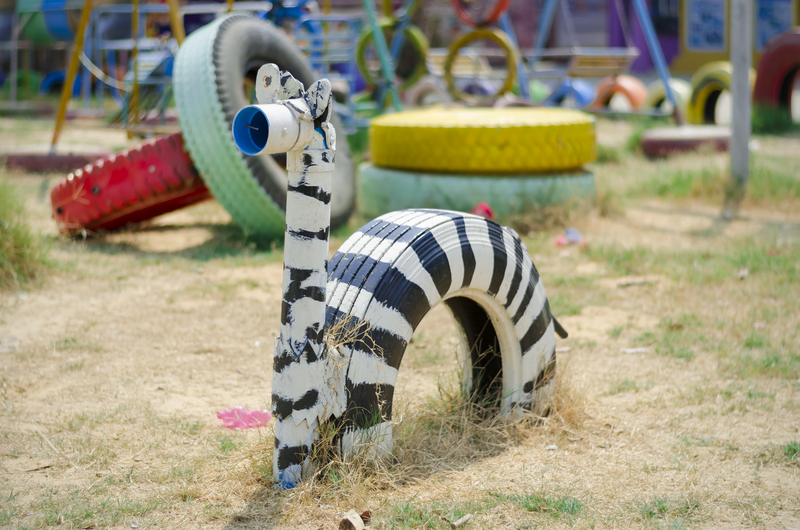Best Practices for Disposing of PPE Waste Responsibly
Personal Protective Equipment (PPE) waste disposal has become a pressing concern across the globe, especially in light of increased usage due to health crises such as the COVID-19 pandemic. With massive volumes of masks, gloves, gowns, and face shields being used daily, responsible PPE waste management is crucial for maintaining environmental sustainability and reducing health risks. This comprehensive guide outlines the best practices for PPE waste disposal, offering actionable steps for individuals, businesses, and healthcare institutions to manage PPE waste effectively.
Why Responsible PPE Waste Disposal Is Critical
The improper disposal of PPE not only threatens public health but also poses environmental hazards. Single-use PPE products are often made of plastic-based materials such as polypropylene, which can take hundreds of years to decompose and may contribute to microplastic pollution. Furthermore, discarded PPE can transmit infectious diseases if handled carelessly. Responsible disposal ensures the safety of individuals, communities, and ecosystems.
What Is PPE Waste?
PPE waste refers to any single-use or reusable protective equipment that is no longer fit for use. Items commonly classified as PPE waste include:
- Disposable Masks (surgical and N95 respirators)
- Gloves (latex, nitrile, vinyl)
- Gowns and Aprons
- Face Shields and Visors
- Protective shoe covers and caps

Environmental Impact of Improper PPE Waste Disposal
Discarding PPE irresponsibly can cause a multitude of problems:
- Environmental pollution: PPE contributes significantly to plastic pollution in oceans, rivers, and landfills.
- Wildlife threats: Animals may ingest or become entangled in discarded PPE, leading to injury or death.
- Spread of pathogens: Used PPE may harbor harmful bacteria and viruses, risking infection to humans and animals alike.
Clearly, adequate personal protective equipment waste disposal is essential to protect both health and the planet.
Key Principles for Responsible PPE Waste Management
To properly manage PPE waste, it's vital to follow established waste handling procedures that mitigate risks and minimize environmental impact. The following core principles form the foundation of safe PPE waste disposal:
- Segregate PPE waste from regular trash: Always separate used PPE from household recycling and general waste to prevent contamination.
- Use clearly marked waste bins: Place bins designated for PPE in accessible, high-use areas.
- Practice proper containment: Double-bagging or sealing PPE in lined containers prevents leaks and pathogen transfer.
- Follow local regulations and guidelines: Dispose of PPE according to municipal or institutional waste management protocols.
- Seek out eco-friendly PPE alternatives: Opt for biodegradable or reusable PPE when feasible to reduce waste generation.
Best Practices for Disposing of PPE Waste Responsibly
1. Disposal Guidelines for Households
Though PPE waste is commonly generated in healthcare settings, millions of single-use masks and gloves are discarded from homes every day. Here are steps for responsible PPE disposal at home:
- Do not recycle used PPE waste: Items such as masks and gloves should never be placed in household recycling bins. Their mixed materials and contamination pose risks to recycling workers and equipment.
- Use a dedicated bin: Have a separate, clearly labeled bin for PPE waste. This prevents accidental contact and cross-contamination.
- Contain PPE securely: Double-bag used PPE items to prevent any leaks or exposure. Tie the bags tightly before disposal.
- Wash hands immediately after handling: Minimize the risk of self-contamination by sanitizing hands thoroughly after disposing of PPE.
- Check local waste disposal guidelines: Some municipalities have specific protocols for PPE waste. Always verify and comply with local rules.
2. PPE Waste Management in Workplaces
Businesses, offices, and public facilities have a duty to protect both employees and the public by ensuring proper management of PPE waste in the workplace. Adhering to the following best practices can significantly reduce hazards:
- Install dedicated PPE waste bins in high-traffic and PPE-usage areas, such as building entrances, break rooms, and restrooms.
- Use color-coded bags and bins to efficiently segregate PPE from other forms of waste.
- Display clear signage with step-by-step instructions on proper disposal.
- Train staff on PPE waste handling protocols, including the safe removal and containment of used PPE.
- Schedule frequent collection of PPE waste to prevent overflow and reduce contact.
- Partner with certified waste management providers who specialize in hazardous or medical waste, if necessary.
3. Healthcare Sector: Handling Medical PPE Waste
Healthcare facilities generate the largest quantities of PPE waste, necessitating rigorous protocols to prevent infections. The safe disposal of medical PPE waste includes:
- Using biohazard bags or containers for all PPE contaminated with blood, bodily fluids, or infectious materials.
- Following "red bag" policies for the collection and disposal of potentially infectious waste.
- Autoclaving or incinerating medical PPE waste if mandated by local regulations.
- Keeping PPE waste containers sealed and stored away from public areas.
- Ensuring staff wears protective equipment when handling or transporting waste.
- Documenting and tracking PPE waste from generation to final disposal, maintaining clear records for compliance and audit purposes.
4. Community and Public Space Management
As PPE use in public spaces rises, especially during pandemics, local governments and property managers can implement specific strategies to manage PPE disposal in communities:
- Station PPE waste bins in busy locations, such as transit stops, plazas, and parks.
- Regularly monitor and empty bins to avoid litter and encourage usage.
- Run educational campaigns to inform the public on the importance of responsible PPE waste disposal.
- Involve volunteers and local organizations in monitoring and cleanup efforts.
Alternatives to Single-Use PPE and Waste Reduction Strategies
While disposal remains a pressing challenge, the most sustainable approach is to reduce the generation of PPE waste at the source. Consider the following waste reduction strategies and alternatives:
Switch to Reusable PPE Where Feasible
Opt for washable cloth masks, gowns, or face shields in non-medical settings. These items can be disinfected and reused, significantly decreasing waste.
Choose Biodegradable PPE
Many manufacturers now offer biodegradable or compostable PPE made from materials like bamboo fibers or bioplastics. These disintegrate faster in the environment and are an excellent option for reducing the long-term impact of PPE waste.
Bulk Ordering and Inventory Control
Organizations should track PPE use and avoid overstocking, which reduces the risk of expiry and unnecessary disposal of large quantities of unused items.
Educate and Train on Waste Minimization
Highlight efficient PPE usage to staff and community members, such as avoiding excessive glove changes or mask use when not required.
Innovative Solutions for PPE Waste Disposal
As the world seeks better ways to deal with the PPE waste problem, several innovative disposal methods are emerging. These include:
- PPE recycling programs: Some countries and companies have launched initiatives to collect and recycle disposable masks and gloves, converting them into building materials like cement additives or road surfaces.
- Thermal treatment: High-temperature incineration can safely neutralize biological hazards, though it requires dedicated facilities to prevent air pollution.
- Advanced sterilization: Using technologies like UV-C light or autoclaves to disinfect and repurpose PPE in critical shortage situations.
- Pyrolysis and chemical recycling: Breaks down plastic-based PPE into raw materials for reuse in industrial applications.
While many of these solutions are still developing, they represent promising steps toward a circular economy for PPE.
Common Mistakes to Avoid in PPE Waste Handling
- Throwing PPE in recycling bins: This contaminates the recycling stream and endangers workers.
- Littering PPE outdoors: Discarded masks and gloves can spread disease and pollute natural environments.
- Neglecting to seal waste bags: Open bags risk exposure to pathogens and accidental spillage.
- Failing to wash hands after disposal: This increases the chance of self-contamination.
PPE Waste Legislation and Compliance
Regulatory frameworks for PPE waste disposal vary by country and sometimes by municipality. Familiarize yourself with local and national policies for hazardous or medical waste disposal. Healthcare facilities and organizations must comply with OSHA, CDC, and EPA guidelines in the United States--or parallel agencies elsewhere. Non-compliance can result in fines, legal repercussions, and reputational damage.
Understanding Waste Classification
Properly classify PPE waste to ensure it is handled and disposed of safely. For example, PPE visibly soiled with blood or other infectious material is considered biohazardous and requires different handling from PPE used for general protection.

Responsibility of Individuals and Organizations
Both individuals and organizations have a moral and legal obligation to dispose of PPE waste responsibly. Here are some steps to assume responsibility:
- Stay informed about the latest best practices for PPE waste disposal.
- Support eco-friendly PPE designs by choosing sustainable products whenever possible.
- Participate in community initiatives aimed at managing and reducing PPE waste.
- Advocate for clear PPE disposal policies in public areas, businesses, and institutions.
Conclusion: Towards a Greener, Healthier Future
The rising use of single-use personal protective equipment serves an indispensable health function, but its environmental and public health impacts cannot be ignored. By implementing the outlined best practices for PPE waste management, we can substantially reduce pollution, enhance community safety, and foster a healthier planet. Remember, responsible disposal starts with each of us--every well-disposed mask or glove makes a difference.
For further guidance, consult your local waste management authority or visit official government websites to stay updated on rules and programs for proper PPE waste disposal.
Together, we can ensure that the tools we use to protect ourselves today will not harm the world we share tomorrow.
```